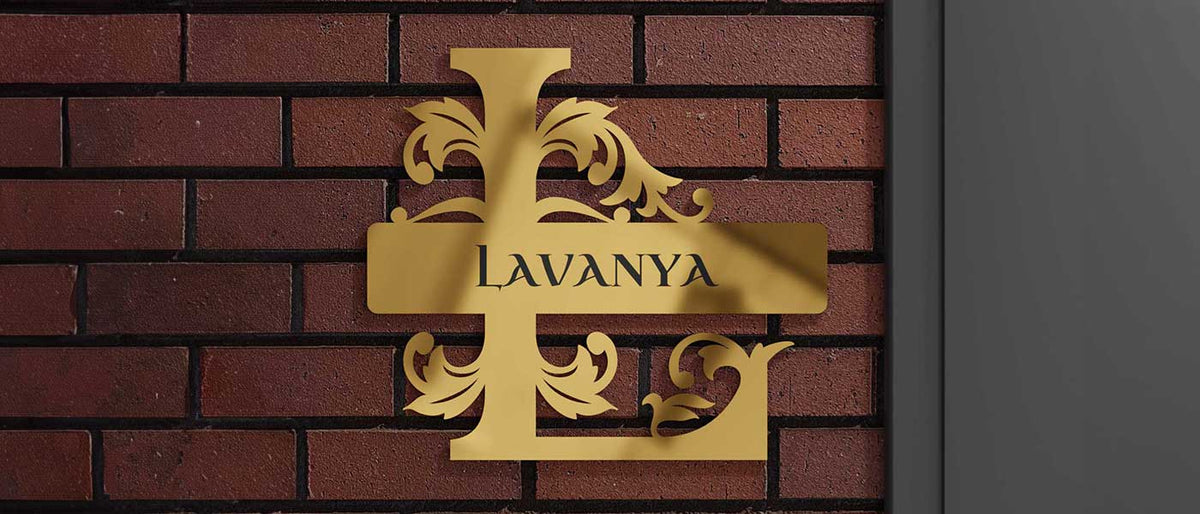
How to install a nameplate without drilling holes in the wall
|
|
Time to read 3 min
|
|
Time to read 3 min
Installing a nameplate on your wall can be a tricky task, especially if you don't want to drill holes. While nameplates are a great way to add personality and character to your space, drilling holes can damage the wall and result in costly repairs - especially when you vacate a rented house and hand it back to the landlord.
Luckily, you can install nameplates without drilling holes, using adhesives and other tools and materials. In this article, we'll guide you through the process of installing a nameplate without drilling a single hole in your walls.
Most name-plates come with pre-cut holes so that they can be screwed to the wall. But if you do not wish to drill holes in the wall, the holes serve no purpose and the blank holes can be quite an eyesore. So, make sure to buy a name-plate without pre-cut holes.
Not all name-plates can be held firmly on the wall without screws - especially name-plates that are heavy (> 1 kg). While some adhesives may promise to hold heavy objects, we have seen that the adhesive's strength is short-lived. You do not want your name-plate to come crashing to the ground after a few weeks.
The weight of the name-plate depends on the material used and the size chosen. If you are opting for a larger size, a lighter material such as acrylic would be better than steel or wood.
You can use various adhesives to install your nameplate, including double-sided tape, hook-and-loop fasteners (commonly known as Velcro), and mounting squares. Double-sided tape is the easiest to use, but it may not be strong enough for heavier nameplates. Hook-and-loop fasteners are great for frequently changing nameplates, and mounting squares provide a secure hold.
Here are the tools and materials you'll need to install your nameplate:
Before you install the nameplate, you'll need to prepare the wall and the nameplate for the installation. Here are a few steps to follow:
Clean the wall surface where you plan to install the nameplate. You can use a cleaning agent to remove any dirt, dust, or debris from the surface. Make sure that the wall is clean and dry before proceeding.
Measure the placement of the nameplate on the wall and mark the spot where you'll install it. Use a measuring tape to ensure that the nameplate is at the desired height and align it perfectly.
Prepare the adhesive according to the manufacturer's instructions. For example, if you're using double-sided tape, cut the tape into the desired length and peel off the backing to expose the adhesive side. If you're using mounting squares, remove the paper liner from one side, place the adhesive side on the nameplate, and then remove the liner from the other side.
Now that you've prepared the wall and the nameplate, it's time to install it. Follow these steps:
Apply the adhesive to the back of the nameplate, ensuring that it's distributed evenly. Make sure that you use enough adhesive to hold the nameplate in place, but not too much that it oozes out from the edges.
Place the nameplate on the wall carefully, ensuring that it aligns with the mark you made earlier. Press it firmly and hold it in place for a few seconds to ensure that it sticks to the wall.
Check if the nameplate is securely adhered to the wall. Wiggle it gently to see if it moves or shifts. If it does, apply more adhesive and press it firmly until it stays in place. Verify the alignment of the nameplate and adjust it if required.
Installing a nameplate without drilling holes is an excellent way to add personality and character to your walls while keeping them damage-free. Choosing the right nameplate and adhesive and preparing the wall and nameplate for installation are essential steps that ensure a successful installation. We hope that this guide has helped you install your nameplate without drilling holes and that your walls remain beautiful, untouched, and damage-free.